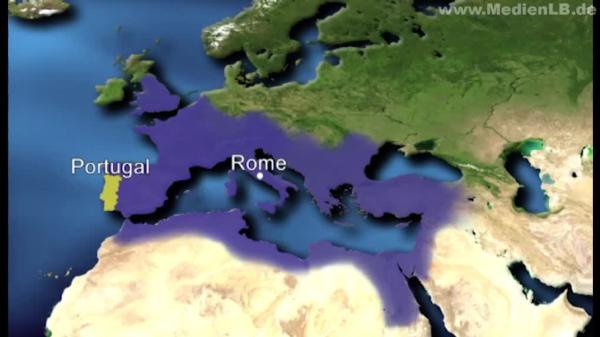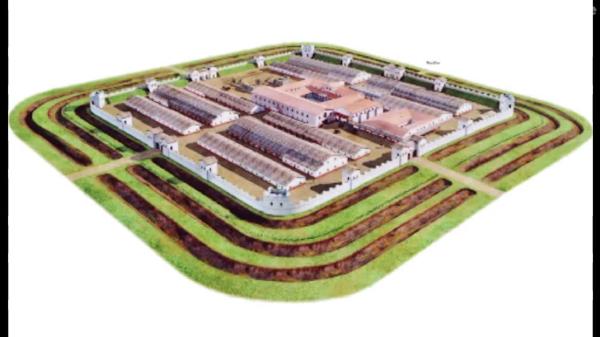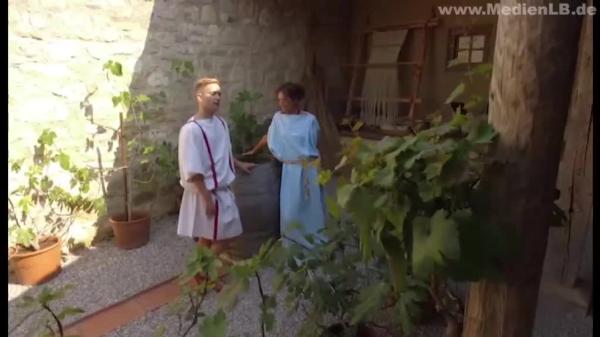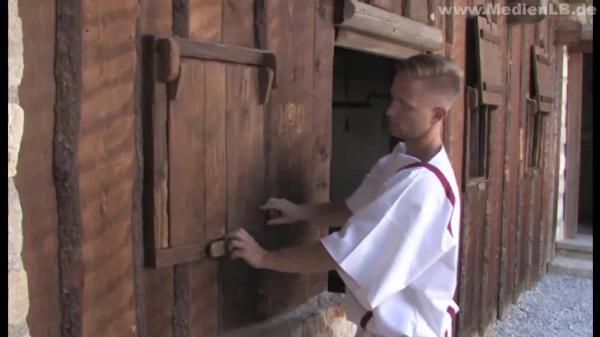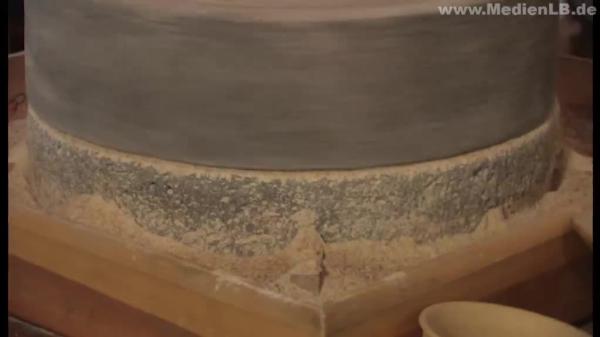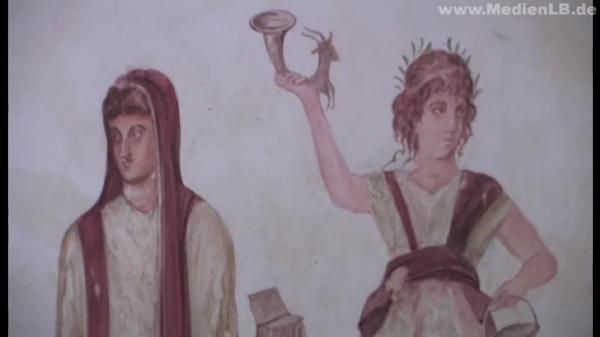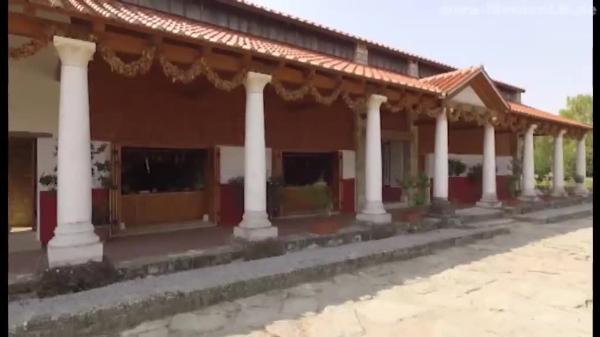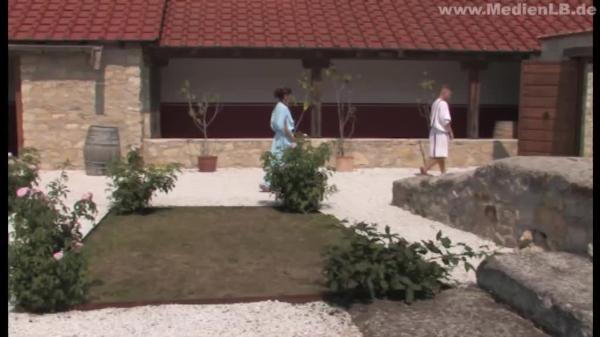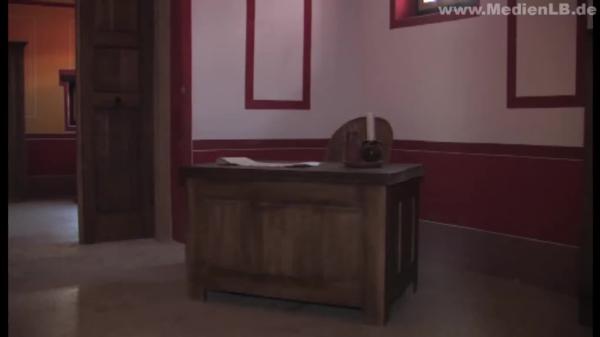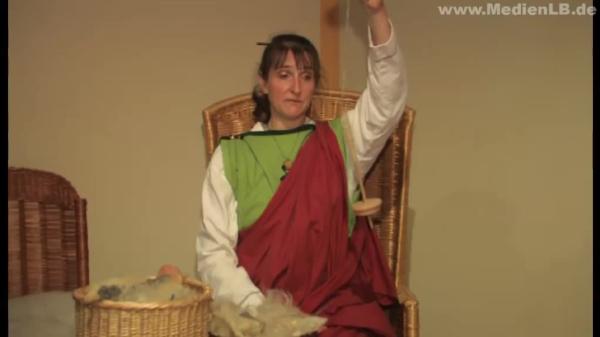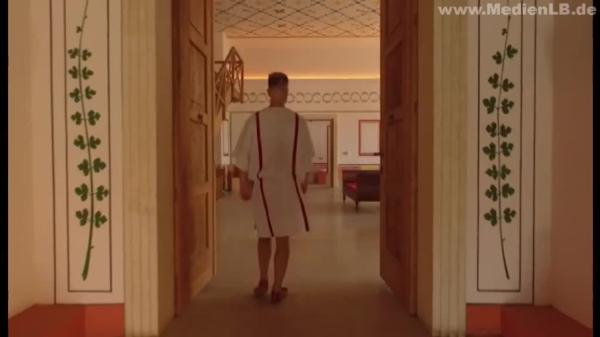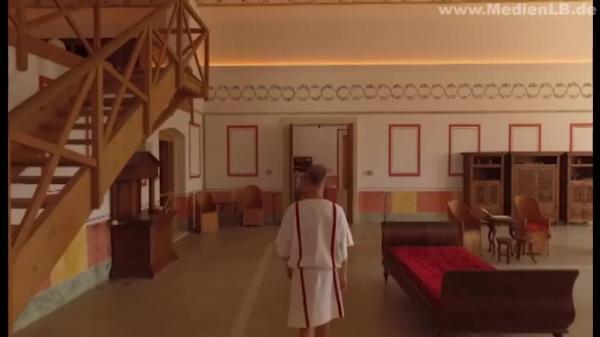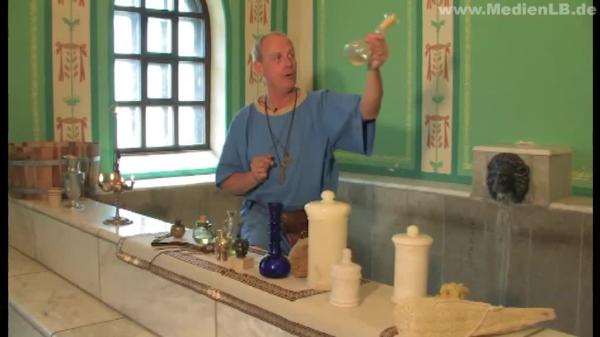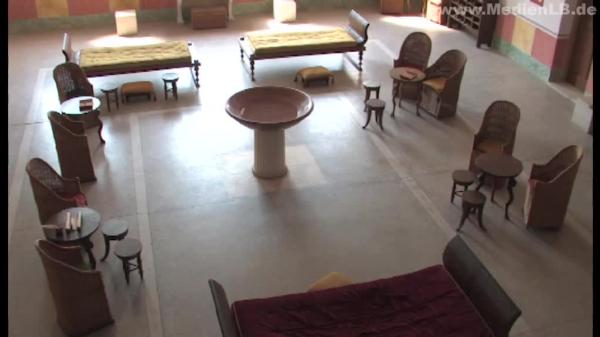Römer
Das Leben im alten Rom

Romans

Augsburg, Cologne, Trier – perhaps you have already heard about these cities. But did you also know that all these cities were built by the Romans? 1. Creation and Growth of a Roman City The ancient Romans ruled over a mighty empire that was far larger than Europe – the Imperium Romanum. The Romans had to wage a lot of wars for it and subjugate native tribes and people. From the capital Rome they soon conquered all countries from Portugal to Syria, from Great Britain to Egypt. In the middle of the first century BC, the Romans came to the southwest of Germany and to Austria. In the north of their empire the Romans built a boundary wall – the Limes. Watchtowers were to help to beat back the enemies. But how was such a city created? Dr. Eduard Pollhammer: “First the military came, as so often. Around the middle of the 1st century, a large camp was built here by the 15th legion.“ Dr. Marion Grossmann: “A Roman army always carries along a train of surveyors. They install an instrument, the so-called GROMA – and with this GROMA a complete land register plan is laid over the greater area of the territory, with right-angles. And where the GROMA has been placed, the PRINCIPIA are erected, the headquarters of the legion camp. They are its centre.“ But how does a military camp become such a big city? Dr. Eduard Pollhammer: ”As usual, the families, the workmen, …various people who were connected to the soldiers then settled around such large legion camps…“ One of these cities was Carnuntum, near Vienna. Carnuntum was a big, rich city with up to 50,000 inhabitants. Dr. Eduard Pollhammer: “Without doubt, it was a very big city, one of the biggest cities here at the middle stretch of the Danube River. It could not be compared, however, to metropolises such as Trier or Cologne and of course not to megacities like Rome or Alexandria.” Living space was scarce, therefore, there were many multi-storey tenement houses with small, dark flats. 2. Life in a Roman City Wealthier families built their own detached houses. This is the house of the Roman Lucius and his family. As a cloth merchant Lucius made good money so he could afford a wealthy life. Dr. Marion Grossmann: “We do not know when Lucius lived in this house. For the rest, we know that Lucius was not exactly poor – he could afford a house that is evidence of a certain wealth. He had underfloor heating, he had mural paintings, he had glass windows. He had a roof that was not covered with wood shingles or straw but with TEGULAE, that is clay tiles. Therefore we assume that maybe he belonged to the merchant class.“ The daily meals were prepared in the spacious kitchen. Bread was the traditional supplement for all Roman dishes. Various cereals were ground to flour with a grinder. Subsequently, the cooking slave refined the dough with salt, spices, herbs or honey. Apart from flour, the Romans used the most various ingredients for their bread – leeks, onions or kitchen herbs were baked as well. Then the loaves were baked in a stone oven. In the Roman kitchen there were, in addition, meat, cereals, fruit and vegetables, of course. Oils, which were an integral part of the Roman way of cooking, were important, too. Herbs and spices were used to refine dishes or to prepare medicines. Romans had a preference for strongly seasoned dishes. They loved to use, for example, mint, oregano or caraway. The gods were especially important to the Romans. In the house of Lucius there was a family altar where the household gods were worshipped. In turn, the gods were asked for a quid pro quo – for example that enough cloth would be sold in the following month. Domestic servant: ”Then people talked to the gods like here, for example, to the Mother Goddess Juno: “Dear Juno, keep the children and the family in good health!“ Or they prayed to the genii of the house, to the deceased – grandfather, grandmother or also mother and father: ”Look, dear Mother, make me find the key again that I lost last week.“ You realise that back in those times, people talked like today. And you see that much of it was taken over later by Christianity, too.“ Life in a Roman city took place, above all, outdoors in the public squares. In the city centre, there was the FORUM – a large square with administrative buildings, a temple and market stalls. Around the forum, there was mostly a covered portico – small shops, taverns and workshops could be found there. Only those handicraft sectors that smelled bad or were dangerous – such as tanneries and smithies – had to remain on the outskirts. Cemeteries, too, were located outside the city walls. At the markets, everything you could wish for could be bought. Market traders advertised their goods at the top of their voices. Also exotic food from the remote Roman provinces was offered there. A simple worker, however, could not afford such foods. 3. Villa Urbana Many people in Carnuntum did very well: Particularly wealthy people lived in so-called villas – that is in sumptuous, large city palaces. Like here, in the Villa Urbana ... In the vestibule, distinguished guests were received before they were introduced to the host. Here, too, there was underfloor heating in many rooms. Lady of the house: “The hot air came from over there, from this channel and circulated around these hypocaust pillars. They consist of quite a number of tile plates piled upon one another. Well, the air circulated around there and then this terrazzo floor was heated from below. There are these wooden tiles called TUBULI, with those holes. Hot air passed from below into these TUBULI and then upwards. And thus we could also heat the walls here.” This luxurious hall was presumably a meeting room where the landlord welcomed his guests. The walls were painted expensively and elaborately and were meant to demonstrate that a rich and distinguished family lived there. The family often stayed in their private rooms to read, write or relax. But who actually lived there? Dr. Marion Grossmann: “Perhaps a rich or high-level civil servant found accommodation here for one or two years, who might have been used to the luxury of the city of Rome and did not want to miss it here in Carnuntum.“ Of course the wealthy families also had servants in daily life. Dr. Marion Grossmann: “In the house of Lucius, for example, we think there were about ten people working for the Roman family. They were slaves and also servants, well, in our case Celts, who worked for the Romans. In the Villa Urbana, probably 50 to 60 slaves and menial staff served their Roman master.“ Whether the numerous tasks in the house were done properly was supervised by the lady of the house. She was also responsible for the education of the small children. Lady of the house: “The Roman landlady came here and worked with her slaves and spun the wool. This is a Roman whorl with a band wheel.“ The wool was woven and made into typical Roman clothes. Lady of the house: “This white garment here is called a tunic, all Romans’ universal piece of clothing, sometimes also in stark colours. The respectable patrician lady never went out in the street without this cape, the PALLA. Men wore such metre-long cloaks. They are called TOGA VIRELIS. These wooden sandals with leather straps were needed so as not to burn your feet because we have underfloor heating and these shoes were mostly worn in the bathroom.“ 4. Thermae Every city had at least one thermal bath – a public bathing establishment ... That was no place for outdoor shoes... Several times a week, Romans met there, relaxed and took care of body hygiene. Here, too, there were paintings and decorations on the walls. A place of well-being. Dr. Marion Grossmann: “Women and children mostly went to the thermae already at noontime. Men did their day’s work first and then came to the thermal bath in the early or middle afternoon, depending on the season. In the most various bathing areas, people sat down in these large pools, which were similar to our whirlpools today. No big swimming pools where people swam their lengths but rather big bath-tub like pools with different temperatures. The ablutions followed a prescribed procedure. ... Domestic servant: “In the bath itself there were again cosmetics and care products apart from those things that had been already prepared. There was hot water, the hot bath in the caldarium, the cold bath in the frigidarium and the alternating bath … That was the bathing culture of the Romans. The Romans didn’t know soap. They cleaned themselves with oil. For this purpose they had a STRIGILIS, like this one … in Pompeii it looked like that. It was for scraping. After rubbing themselves with oil, people simply scraped off the dirt and the oil with the STRIGILIS. These perfume bottles of glass were common in Roman times. People used not only perfumed oils and ointments, no, they also had the possibility of peeling. Here is salt in alabaster vessels. People oiled themselves as we have just seen and then they simply made a peeling with the salt… The skin is cleaned, it breathes and pulsates. That was an advantage to your health, as people already knew back then.“ Dr. Marion Grossmann: “Every Roman wanted to go to the thermae every day – also the poorer people. And therefore, there were laws quite early on which regulated admission to the thermae. It has been said repeatedly that entrance tickets were not supposed to cost more than a chicken egg, that means they were relatively cheap, actually.“ Dr. Marion Grossmann: “There were always a big hall or several rooms where people could get massages, read PAPYRI, chat together. There was a courtyard, PALAESTRA, for games, ball games. Wrestling was a favourite activity as a physical exercise. But then people also read literature, conversed intelligently or even concluded transactions…“ Speaking of transactions: They were often concluded in the latrines, the toilets of the time. So they were anything but quiet places. There were no partitions and people had lively discussions in there. Lady of the house: “This is a Roman toilet, the LATRINA. This is Roman toilet paper. When we had done our business, we dipped this sponge into the water. The water came from the roofs of our villa, it was passed in underground through a swale. Then we dipped the sponge in and inserted it from below through this gap. It was an entirely clean affair.“ As if time had stopped, Carnuntum became a museum. How did that happen? Dr. Marion Grossmann: “We shaped the stones in the same way as the Roman builders had done. We copied tools, well, tools which had been found in Carnuntum. And our builders used these tools. We made mortar in the Roman way, that is, with slaked lime. In cooperation with a glazier we used Roman techniques to manufacture window glass. The roof tiles … That means we really tried to construct the buildings as the Roman builders or architects had done.“ The spirit of the Romans is still felt at Carnutum – even though 1,700 years have passed in the meantime.


